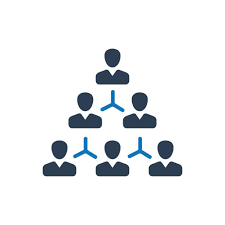The most terrifying thing is anyone can be targeted by cybercriminals.
Whether you are just an individual or a company or an organization. No matter what your size is! Here are some cybersecurity basics and putting them in practice will help us protect our business and the risk of a cyber-attack.
Let’s protect our files and devices;
Keep your software up to date whenever new updates are available.
Secure your files by backing up important data offline, on an external hard drive, or in the cloud. Also, ensure the safety of physical paper files.
For enhanced security, password-protect all laptops, tablets, and smartphones. Avoid leaving these devices unattended in public areas.
How we can protect our wireless network?
We can secure our router by doing those primanry steps;
- By changing the default name and password.
- Turn off remote management.
- Log out as the administrator once the route is set up.
Make Smart Security your business as usual
Require strong passwords
- At least 12 characters.
- A mix of numbers, symbols, and capital lowercase letters.
- Never reuse passwords.
- Don’t share them on the phone, in texts, or by email.
- Limit the number of unsuccessful log-in attempts to limit password-guessing attacks.
Train all staff
Encourage a secure culture by regularly training employees on security practices. Keep employees informed about new risks and vulnerabilities as they arise. If employees fail to attend these updates, consider restricting their access to the network.
The NIST Cybersecurity Framework
The National Institute of Standards and Technology (NIST) at the U.S. Department of Commerce recommends a framework that helps businesses of all sizes better understand manage, and reduce their cybersecurity risk and protect their network.
There are 5 areas NIST cybersecurity framework suggests. Those are;
Identify
Identify starts with making a list of all equipment, software, and data being used, including laptops, smartphones, tablets, and point-of-sales devices.


Create and share a company cybersecurity polity that covers;
Roles and responsibilities for employees, vendors, and anyone else with access to sensitive data.
Steps to take to protect against an attack and limit the damage if one occurs.

Protect
- Control who logs on to your network and uses
your computers and other devices. - Use security software to protect data.
- Encrypt sensitive data, at rest and in transit.
- Conduct regular backups of data.
- Update security software regularly, automating
those updates if possible. - Have formal policies for safely disposing of
electronic files and old devices. - Train everyone who uses your computers,
devices, and network about cybersecurity.
You can help employees understand their
personal risk in addition to their crucial role
in the workplace.
Detect
Monitor your computers for unauthorized personnel access, devices (like USB drives), and software.
Check your network for unauthorized users or connections.
Investigate any unusual activities on your network or by your staff.

Respond
Notifying customers, employees, and others whose data may be at risk.
Keeping business operations up and running.
Reporting the attack to law enforcement and other authorities.
Investigating and containing an attack.
Updating your cybersecurity policy and plan with lessons learned.
Preparing for inadvertent events (like weather emergencies) that may put data at risk.


Recover
Repair and restore the equipment and parts of your network that were affected.
Keep employees and customers informed of your response and recovery activities.



